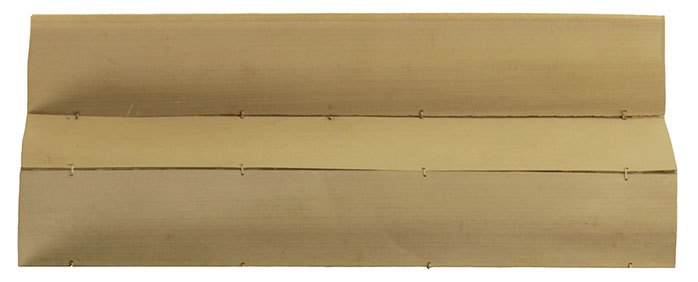‘Palm-leaf manuscript’ is a manuscript that is made from dried ‘palm-leaves’. In Sanskrit a palm tree is called तालवृक्ष (Tal-tree). It is also known as ताडवृक्ष. There are two types of palm trees found in the Indian subcontinent; खरताड and श्रीताड . खरताड (Palmyra Palm) a species of palm trees are found near Gujarat, in the western coastal regions of India. श्रीताड (Talipot Palm) tree leaves are somewhat stiff and are thicker in nature, thus they were commonly used as a writing surface.
Palm-leaf manuscripts were created either from the long leaves of the Talipot palm or from the shorter leaves of Palmyra palm. These leaves are long in their sizes usually 20 to 50 centimetres long and from 3 to 5 centimetres wide. Palm-leaf manuscripts are typically seen in the form of bundles of 50 to 100 neatly shaped leaves of even sizes bound together with a string.
In order to prepare the leaf for the writing process, the leaves were first dried in a controlled manner. Later, they were put into boiling water and burnished well with spices like turmeric. Through this process, the surface of the palm-leaf became smooth and ready to use. These leaves were then trimmed into required sizes, and were used as a bundle of loose leaves. This bundle was subsequently covered with thick wooden planks, which were usually decorated with colourful illustrations.
Thousands of covered palm-leaf manuscripts are found throughout Gujarat and Rajasthan. They are mostly found in the temple repositories and museums.

Image: Dried Palm-leaves bound together.

